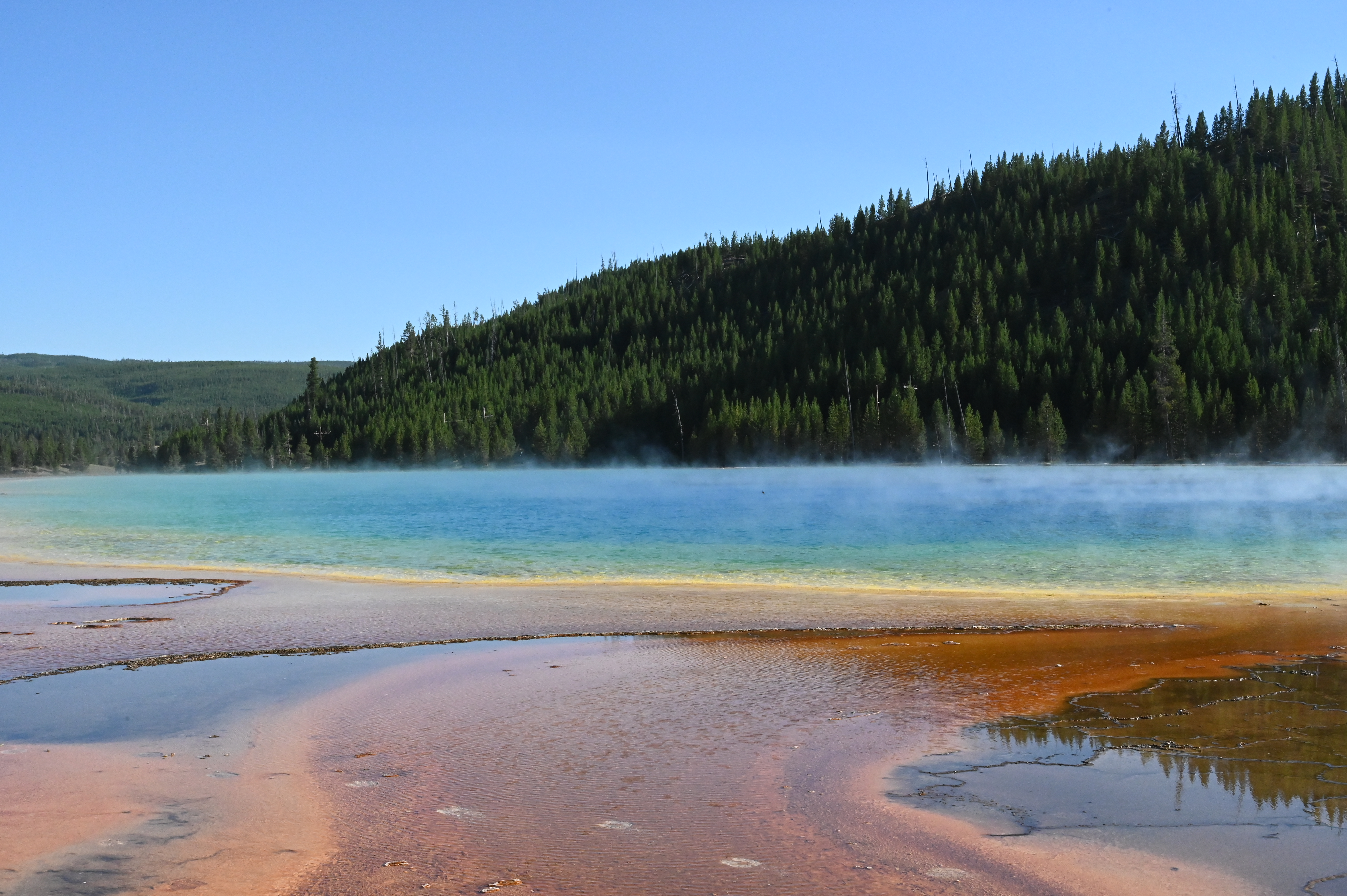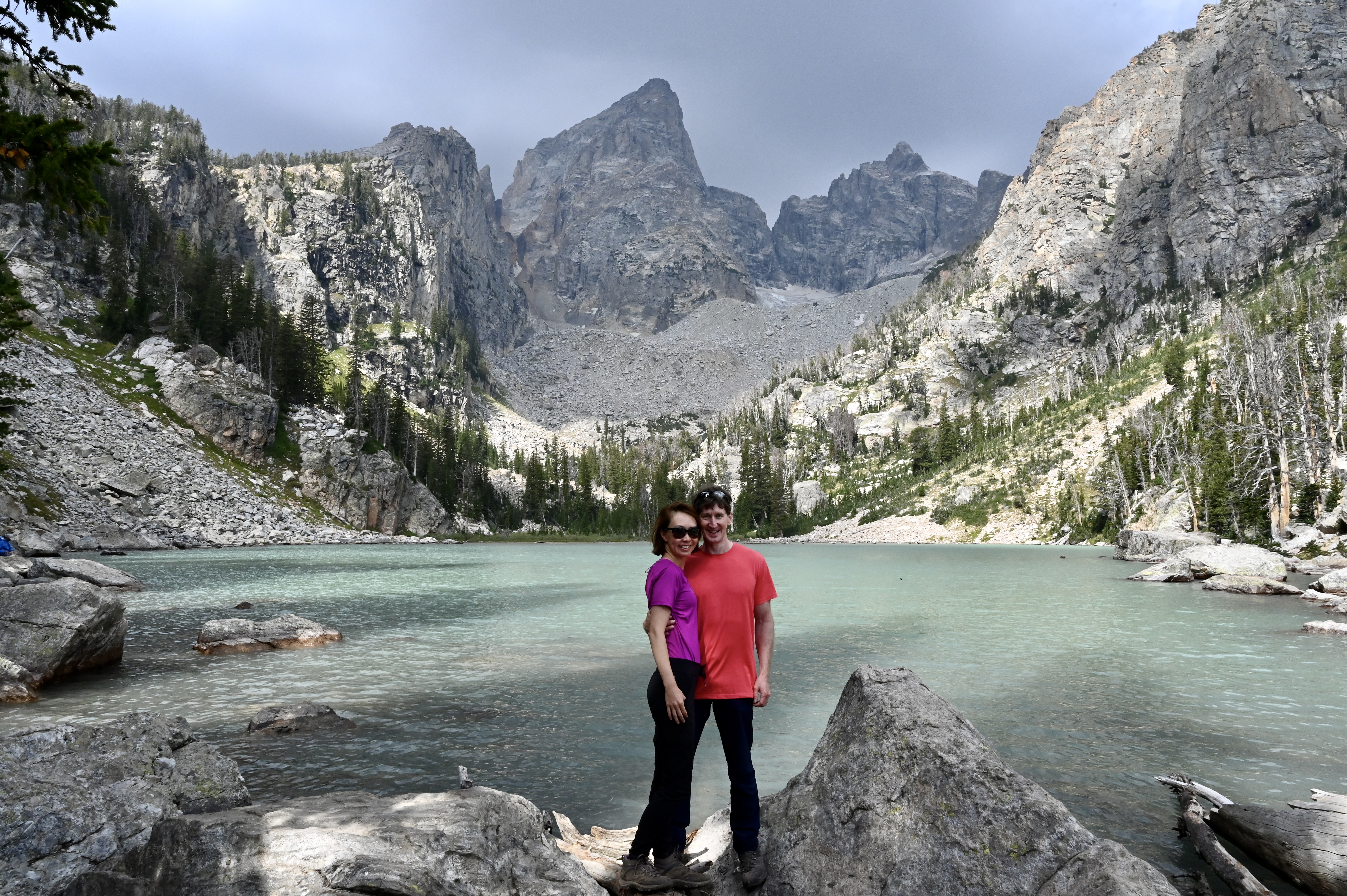Paris, the City of Light, is one of the most beautiful cities in the world, and it is also one of my favorites. Filled with art, history, fashion, romance, and food, Paris has been a dream destination to all travel aficionados. As storied as Paris is, this city offers you more than you would expect, from world-class museums to the trendiest garment shops to top-rated restaurants.
Paris is full of life and energy. The city shines with a magical brilliance of history and presence, calmness and vibrance, classical and modern. These juxtapositions make Paris a fascinating city to visit.
There are so many things to see and to do in Paris. You can appreciate the museums, admire the cathedrals and basilicas, experience the operas, stroll around the gardens, taste the fine restaurants, breathe the air along the riverbank of the Seine, and eat plenty of crepes and pastries. You will never get bored in Paris, but planning is key to guarantee a wonderful experience. If this is your first time visiting Paris, this article will make your trip planning easy and enjoyable. I have listed the most popular sights, tasty restaurants, hotel selections, and many practical tips that you wish you knew before you boarded the airplane.
Table of Content
- An overview of the city of Paris
- What to see in Paris
- Some special restaurants and patisseries
- Where to stay in Paris
- Paris metro system
- How to get cell phone connectivity
- Tips on traveling in Paris
An Overview of the City of Paris
First, let’s get an overview of the city of Paris that will help you develop an idea of where everything is geographically. Plan your visits to see adjacent areas and avoid wasting too much time on local transportation.
The city of Paris is divided into 20 arrondissements that spiral from the center of the city at Louvre-Tuileries. The Seine River that arches through the southern half of the city divides it into the Left Bank and the Right Bank.
See the picture below.
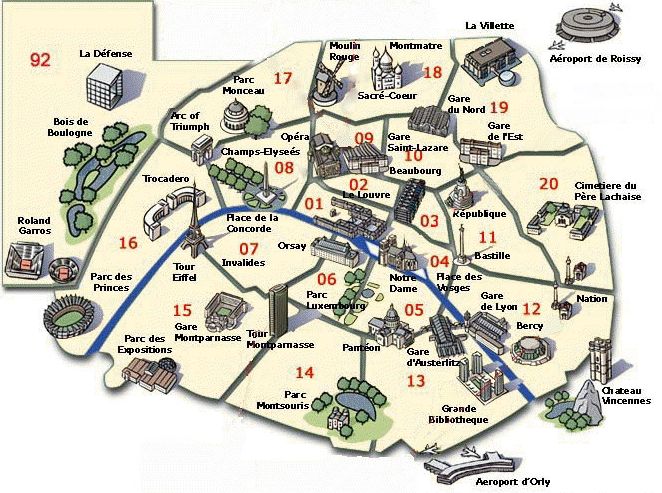
The major attractions in each arrondissement are:
| the 1st arrondissement | The Louvre Museum and Tuileries Garden |
| the 2nd and 3rd arrondissements | Local theaters, clubs, and nice shops |
| the 4th arrondissement | Notre-Dame Cathedral |
| the 5th and 6th arrondissements, also known as the “Latin Quarter” | Pantheon, Luxembourg Garden, and Orsay Museum |
| the 7th arrondissement | Eiffel Tower |
| the 8th arrondissement | Champs-Elysees, and Arc de Triomphe |
| the 9th arrondissement | Opera Garnier |
| the 18th arrondissement | Montmartre, and Sacre-Coeur |
What to See in Paris
1. The Louvre Museum
The Louvre Museum is on everyone’s list. It is truly a must see. The Louvre Museum exhibits a wide ranging collection of artworks from the ancient world to the 1850s, including more than 30,000 pieces of art. It is impossible for anyone to see all of them on one visit. Knowing what the most famous exhibitions are and where they are located can help you form your strategy of visiting the Louvre Museum without getting overwhelmed.
When I first visited the Louvre Museum in 2012, the locals gave me a tip on how to cover the museum as a first-time visitor: see the highlights. The Louvre Museum provides guidebooks in many languages at the information desk. The guidebook includes the map of exhibitions on every floor and also tells you what world-famous artworks are being exhibited and where they are located.
Take a guidebook and follow the exhibition map, find the world-famous artworks, and see the others on the way. That is my strategy to visit the Louvre Museum, and it has worked very well. I didn’t miss any top-rated exhibitions in the museum, and I was able to enjoy a lot of excellent artworks along the way.
A visit to the Louvre will usually take more than 4 hours, but you can stop at the cafes in the museum for lunch and coffee breaks.

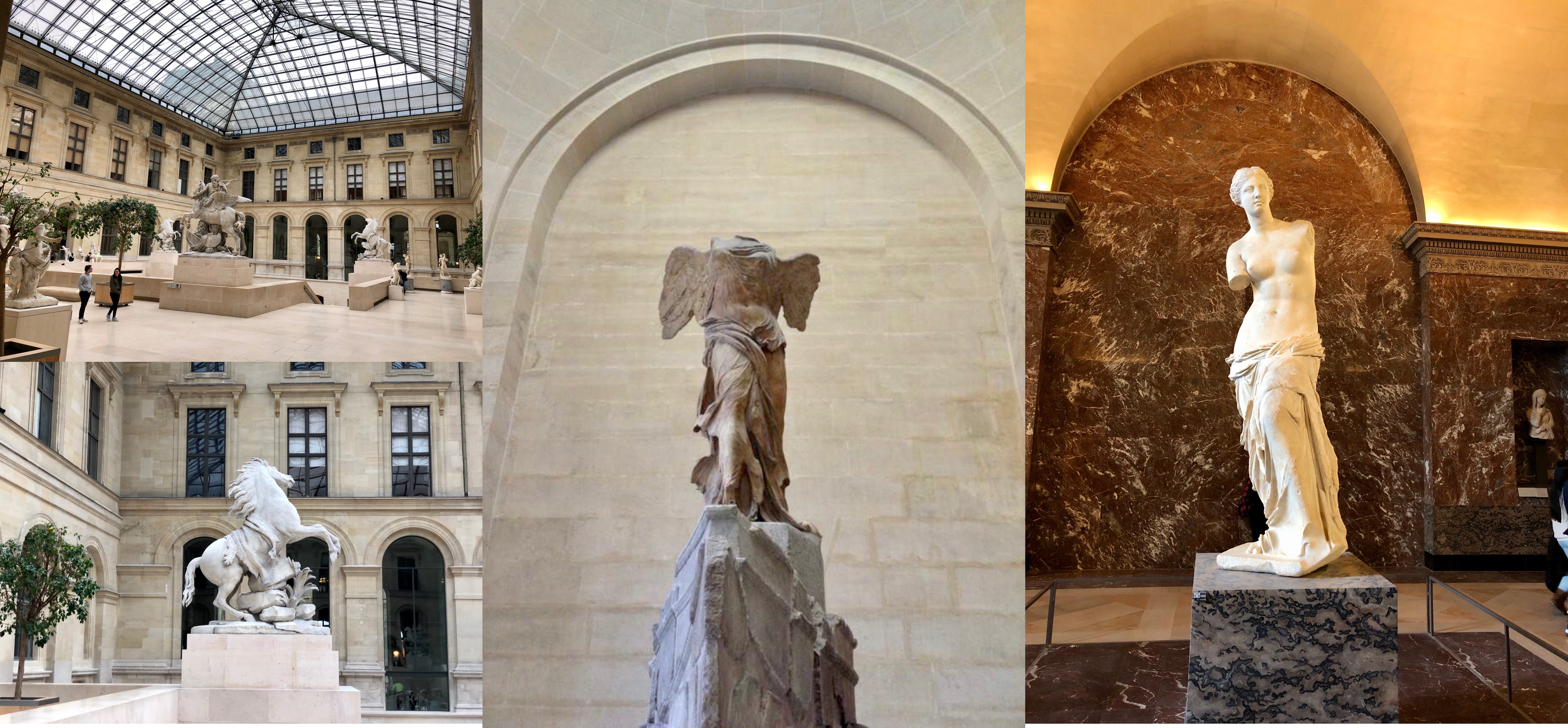
2. Orsay Museum
The Orsay Museum is a 15-minute walk from the Louvre, across the Tuileries Garden.
The artworks in the Orsay Museum take up where the artworks in the Louvre leave off. While the Louvre hosts the artworks from the ancient times to the 1850s, the Orsay Museum is home to the artworks from 1848 to 1914, including Europe’s finest collection of Impressionist art. I highly recommend the Orsay Museum if you are interested in art history.
3. Notre-Dame Cathedral
Notre-Dame is located on an island in the Seine River, along the riverbank. This 850-year old medieval Catholic cathedral has chronicled many France’s historical events, the coronations of French Kings and the coronation of Napoleon as Emperor. Notre Dame Cathedral embodies a living history of France and is a spiritual symbol for the primarily Catholic French people.
The architecture of the Notre-Dame Cathedral is one of the finest examples of French Gothic architecture, with large stained glass rose windows, flying buttresses and ornate decoration. Stroll around the riverbank and enjoy this beautiful architecture from the outside. The inside of the Notre-Dame is free to visitors, but if you want to climb up either of the two bell towers, you need to purchase tickets.
It was heartbreaking to hear that the Notre-Dame Cathedral suffered a catastrophic fire in 2019. I hope it will be restored soon. I was very lucky that I got to visit Notre-Dame and even attended the Christmas Midnight Mass and I hope you may as well, when it is restored.
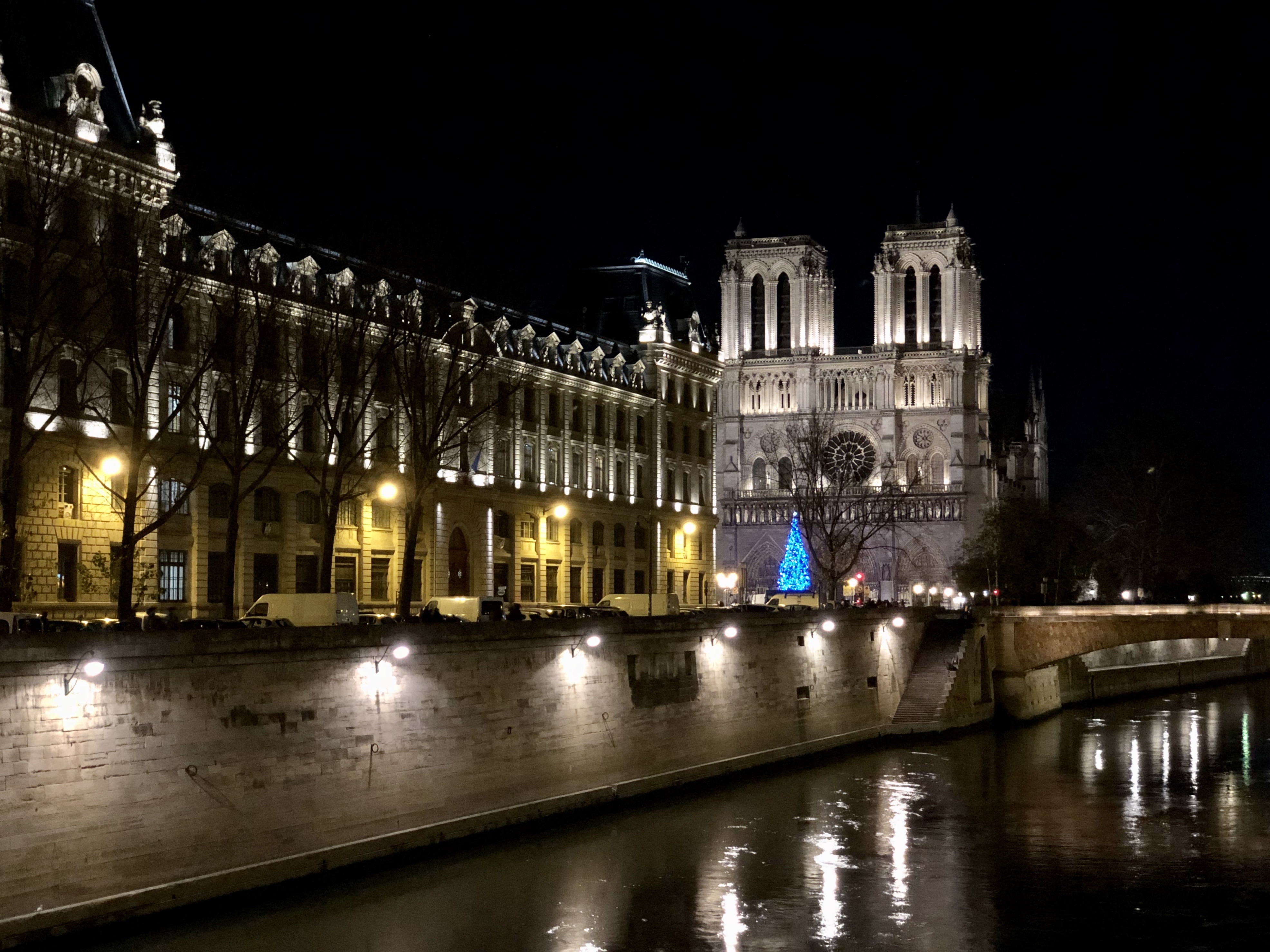
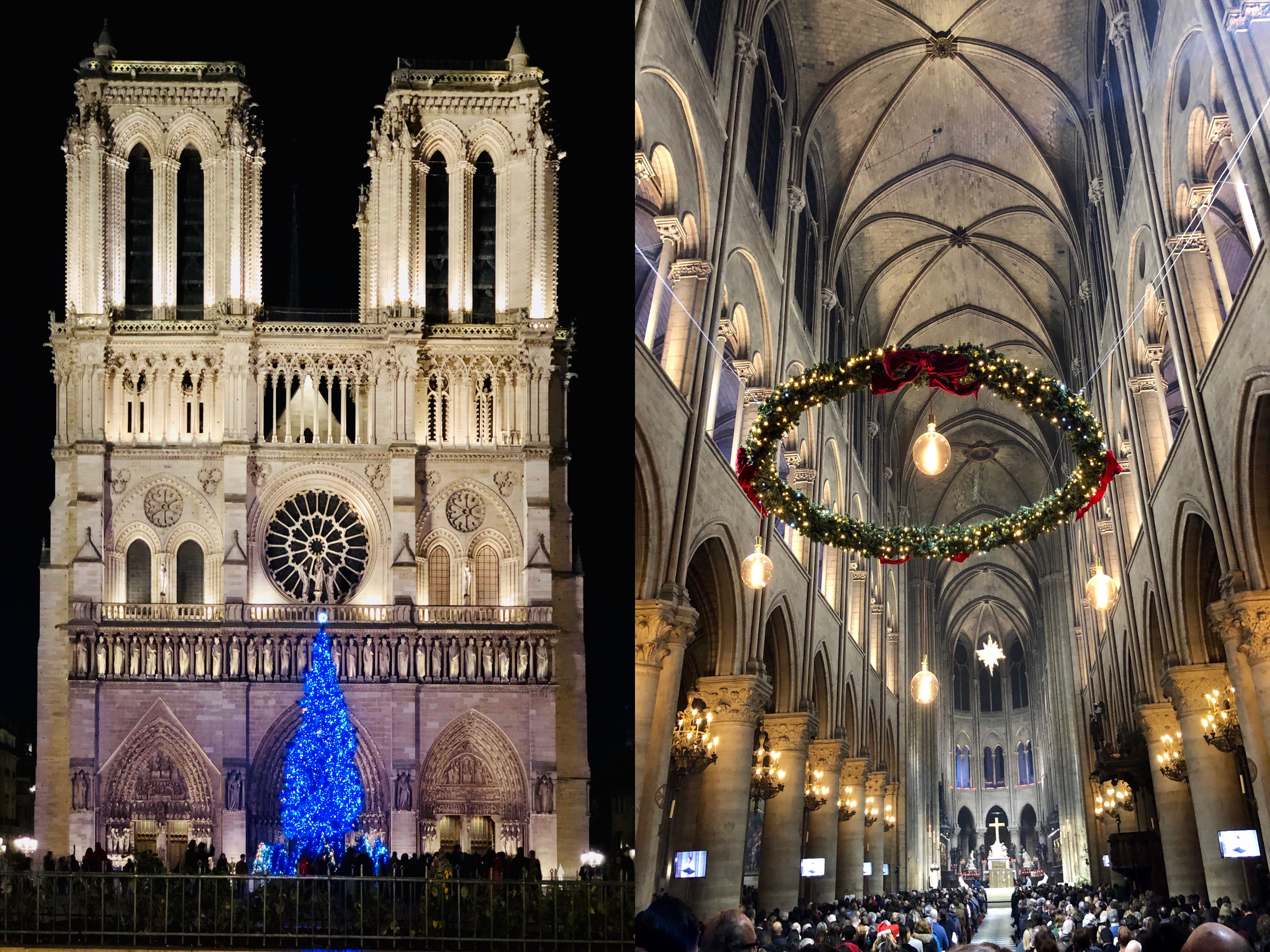
4. Eiffel Tower
The Eiffel Tower is an icon of Paris. It was built in the 1880s as the entrance to the 1889 World’s Fair by the tower engineer Alexandre Gustave Eiffel. The Eiffel Tower is 1063 ft tall, the tallest structure in Paris, and also the tallest man-made standing structure in the world when it was built. It attracts millions of people every year and is the most-visited paid monument in the world.
The Eiffel Tower is also considered a symbol of love. Gustave Eiffel, who was inspired and encouraged by his wife and had become a world-renowned engineer, built this tower to remember and respect his lovely wife after she died.
The Eiffel Tower looks beautiful from every angle. You can see this iconic tower from many places in Paris, even on the hill of Montmartre, 6 km away. You also can go inside the Eiffel Tower, go to the highest level and enjoy the beauty of Paris.
The Eiffel Tower offers three floors to visitors, with restaurants on the first and second floors.
The 1st floor is 57 meters, approximately 187 feet, above the ground. You can get to the first floor either by elevator or by a 704-step flight of stairs. On the first floor, there is an introductory film room, an information wall filled with photos, images, and drawings about the history of the Eiffel Tower, and a restaurant – 58 Tour Eiffel Restaurant, where you can enjoy lunch or dinner.
The 2nd floor is 125 meters, roughly 410 feet, above the ground. You can get there by either elevator or a 604-step stairway. Besides the fantastic city view, a gift shop, two buffets, and a macaroon bar, the second floor also has a Michelin-starred restaurant, the Jules Verne Restaurant. The macaroon bar is a wonderful place for a coffee and pastry break, if you don’t plan to eat a meal at the Eiffel Tower.
The 3rd floor, also called the summit, is 300 meters (906 feet) above the ground. It only can be accessed by the elevator from the second floor, not from the ground. The summit offers a spectacular view of Paris from the highest point of the city. A champagne bar is also available on this floor.
Tickets can be purchased online in advance so you can avoid the long lines. The same-day elevator tickets are also available on the site at the Tower’s north, west, and east pillars. The south pillar sells stairs-only tickets.
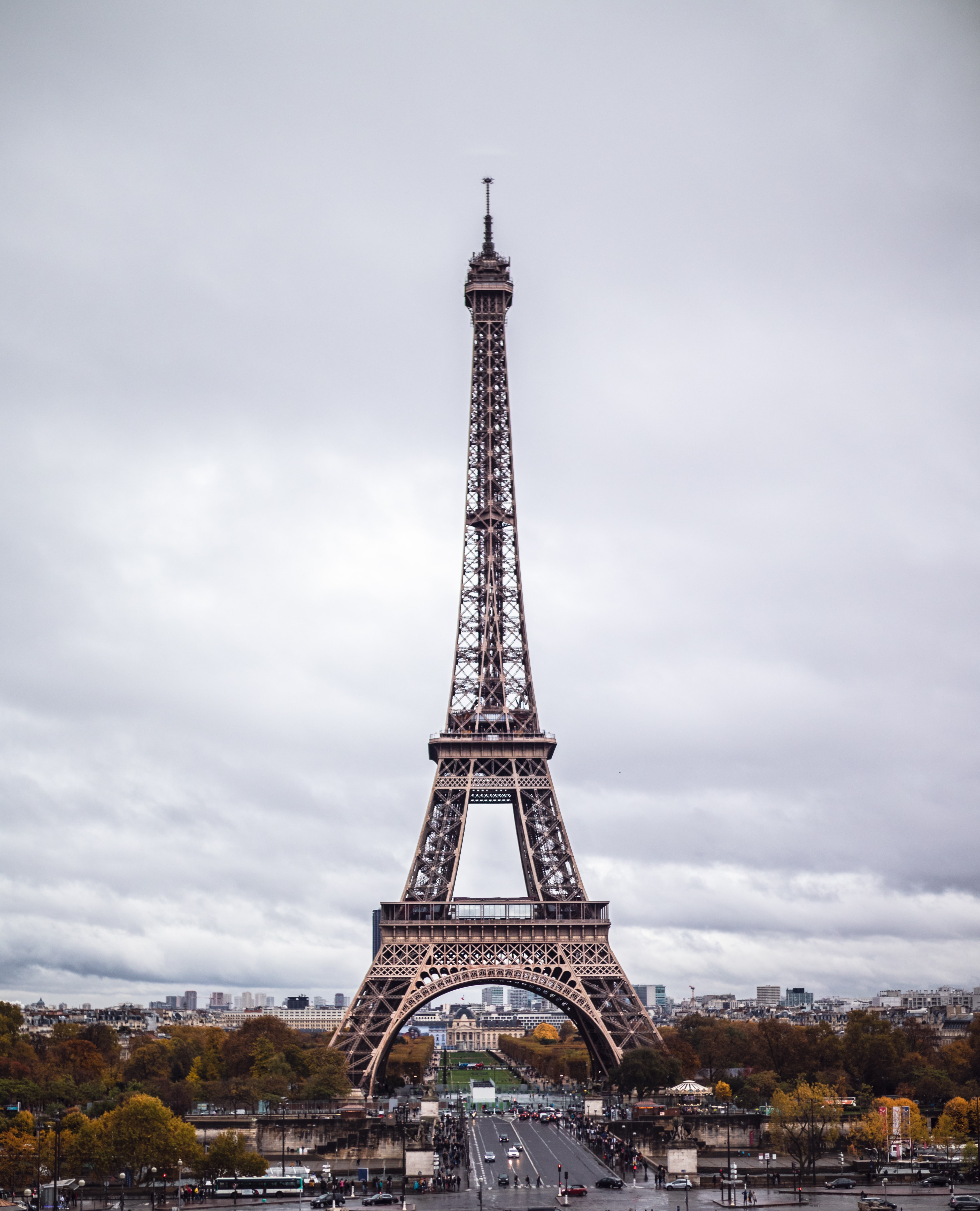
5. Champs-Elysees
Lined with glamorous shops, fine restaurants, upscale bars, and authentic French cafes, the Champs-Elysees is one of the most beautiful streets in the world. This 1.2-mile long street also serves as the route of France’s largest military parade, on Bastille Day.
If your day is already filled with visiting museums and monuments, you can walk along the Champs-Elysees after dark. With décor lights lit up, and all the shops, restaurants, cafes, and bars still open, it is a perfect place to get acquainted with the Paris nightlife.
6. Arc de Triomphe
You can see the Arc de Triomphe all along your walk on the Champs-Elysees. The Arc was built as a symbolic icon of Napoleon’s victory at the 1805 battle of Austerlitz.
7. Pantheon
The Pantheon is located in the Latin Quarter. It was originally built as a church with the designer’s ambitions to outdo the churches of St. Peter’s in Rome and St. Paul’s in London.
In 1774, an ailing King Louis XV was miraculously healed after praying for the intercession of St. Genevieve. King Louis XV thanked her by replacing the original church of St. Genevieve with a better tribute on the same site. Today, Pantheon is home to many historical records and artworks and is the final resting place of many great Frenchmen.
The façade of the Pantheon looks similar to that of the Roman Pantheon, with thick concrete walls to support a huge dome and a massive portico of Corinthian columns. The interior of the Pantheon is decorated with massive mosaics and canvas paintings illustrating the life of Saint Genevieve.
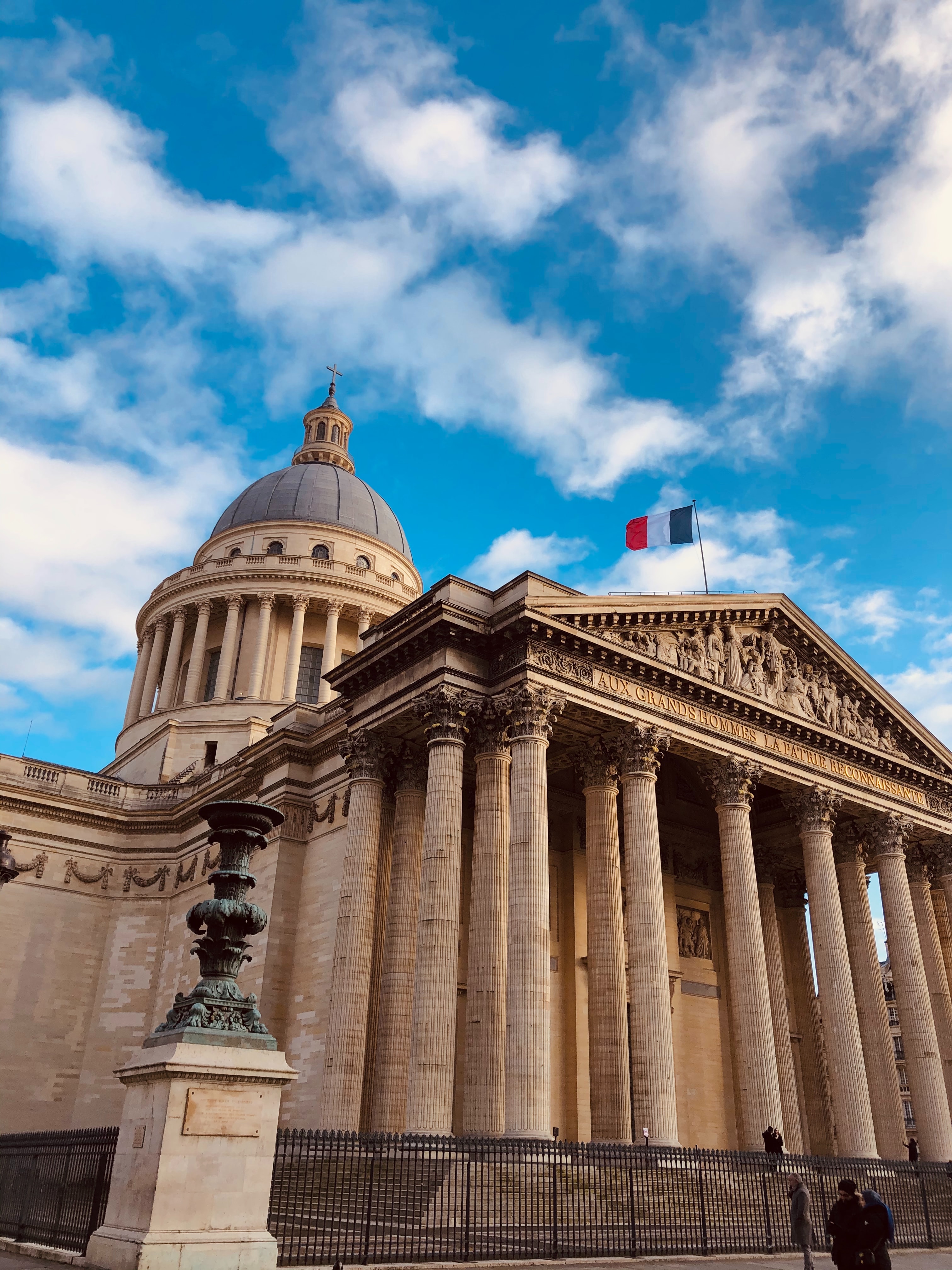
8. Luxembourg Garden
The Luxembourg Garden is also located in the Latin Quarter, close to Pantheon. This Italian style garden is a perfect place to enjoy some fresh air after spending hours in the museums.
This 23-acre landscape was built to recall the childhood of Marie de’ Medici, Queen of France. The landscape offers quite a few lovely features: beautiful flowerbeds, sculptures along the promenades, and a Medici Fountain, as well as an Italian style palace.
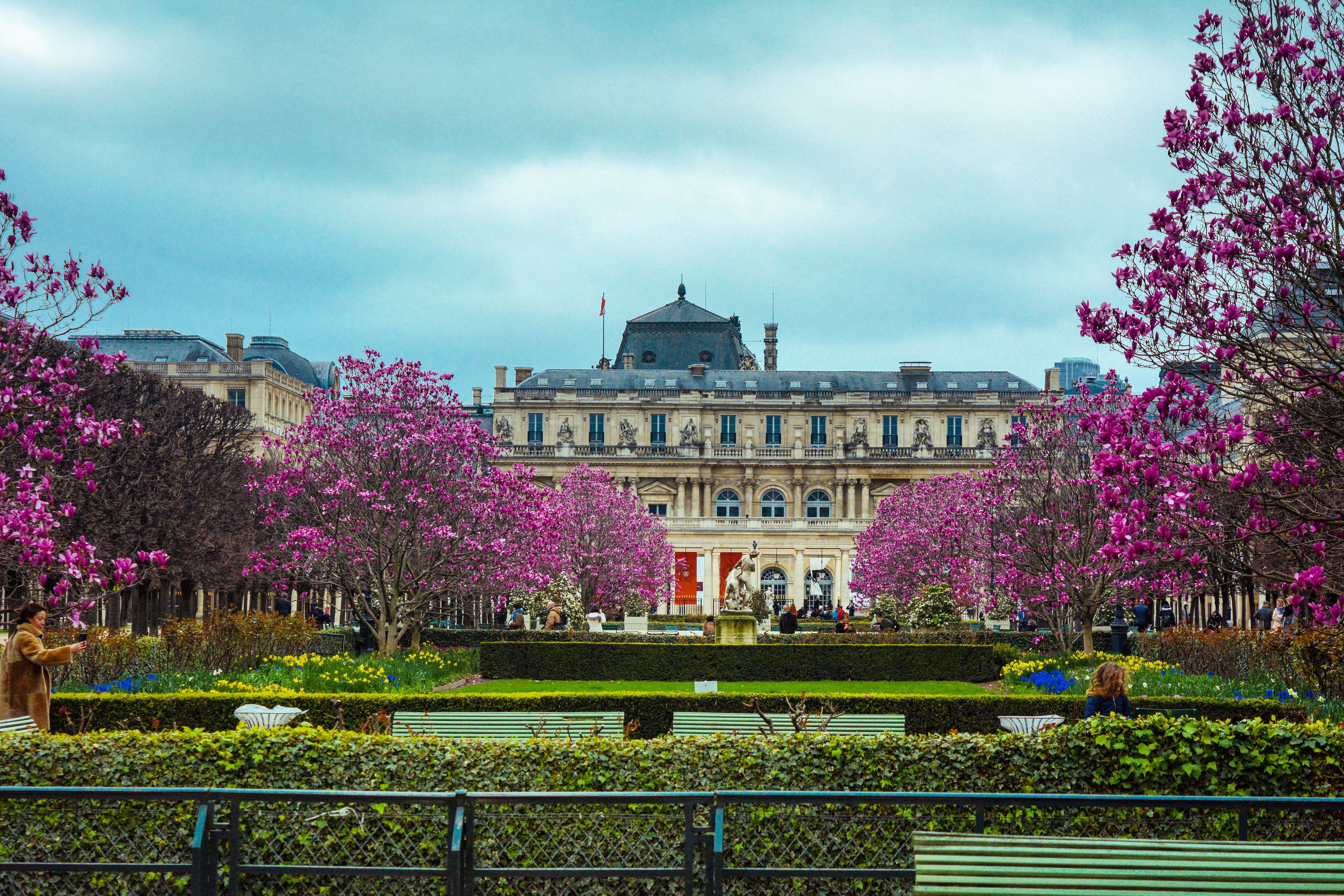
9. Tuileries Garden
The Tuileries Garden is a French formal style garden, located close to the Louvre Museum. The Tuileries Garden is one of the largest and oldest French gardens, with a rich history dating back to the 17th century.
The name of the garden comes from the original Tuileries tile factories in the same place. Catherine de Medici, the widow of King Henri II, transformed the tile factories into gardens. Later re-landscaped by King Louis XIV’s famous gardener, Andre Le Notre, in 1664, the Tuileries Garden shines with the popular and formal French garden style.
It is a very pleasant place for walking around and, because it is frequented by Parisians as well as tourists, for learning about French culture.
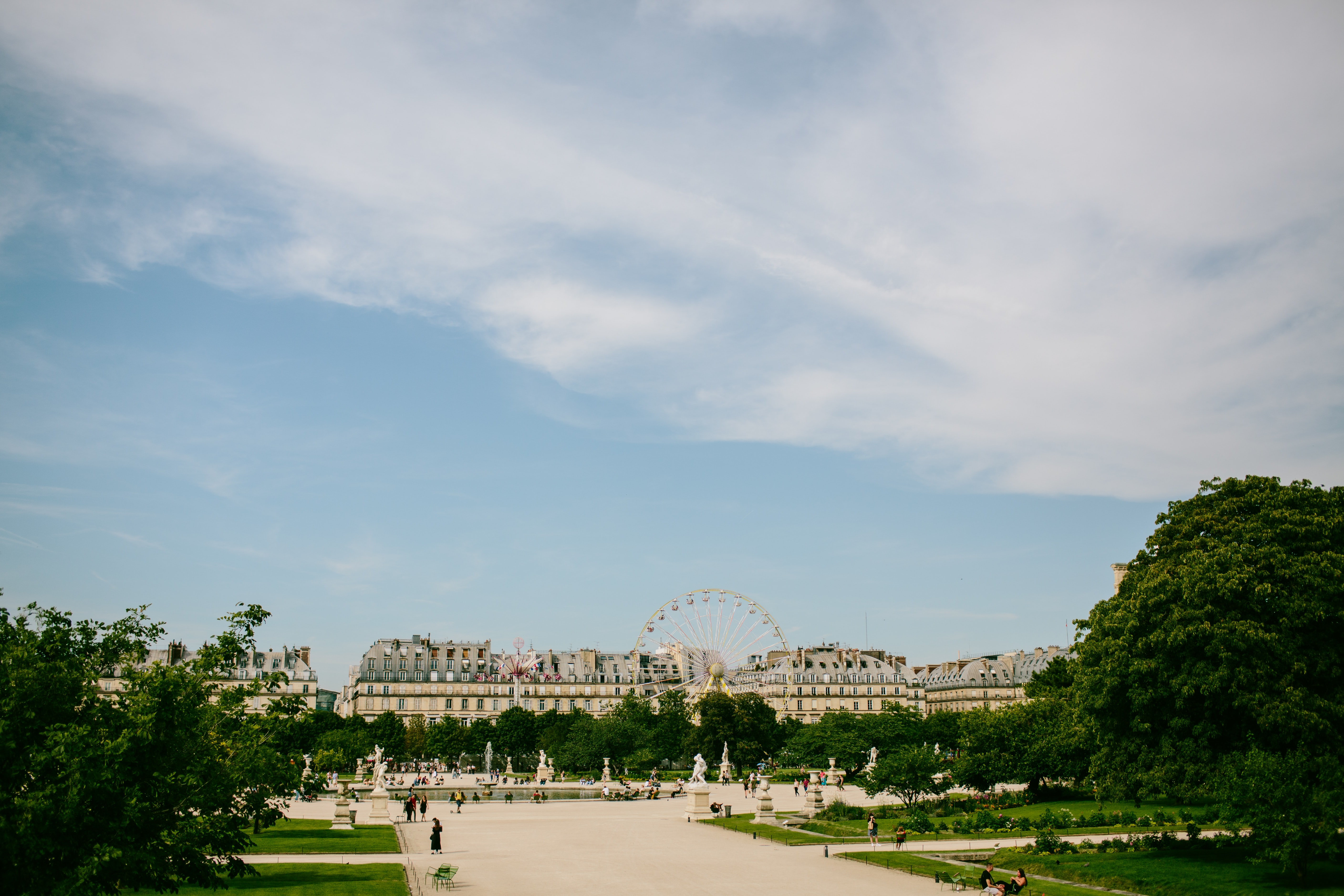
10. Opera Garnier
The Opera Garnier is an Italian style opera house, with the painted celling by the famous Russian artist Marc Chagall.
Watching a performance in the opera house may be the best way to explore and experience the Opera Garnier. But if your schedule doesn’t plan for a show, you can either take a guided tour to see the inside of the Opera or walk around the public areas on your own.
11. Montmartre and Sacre-Coeur
Montmartre is a large hill in the 18th arrondissement. It is a bit further away from the city center, but Montmartre has a lot to offer.
The stunning basilica, Sacre-Coeur, sits on the summit of Montmartre. Completed in 1914, the Sacre-Coeur is a relatively young basilica in a city with more than 2,000-year history, but it is one of the most beautiful basilicas for both its exterior and interior. Unlike the Gothic cathedrals in Paris, the Sacre-Coeur was built in the Romano-Byzantine style. The interior of the Scare-Coeur contains a massive amount of mosaics with gorgeous stained glass windows, creating an atmosphere of harmony and peace.
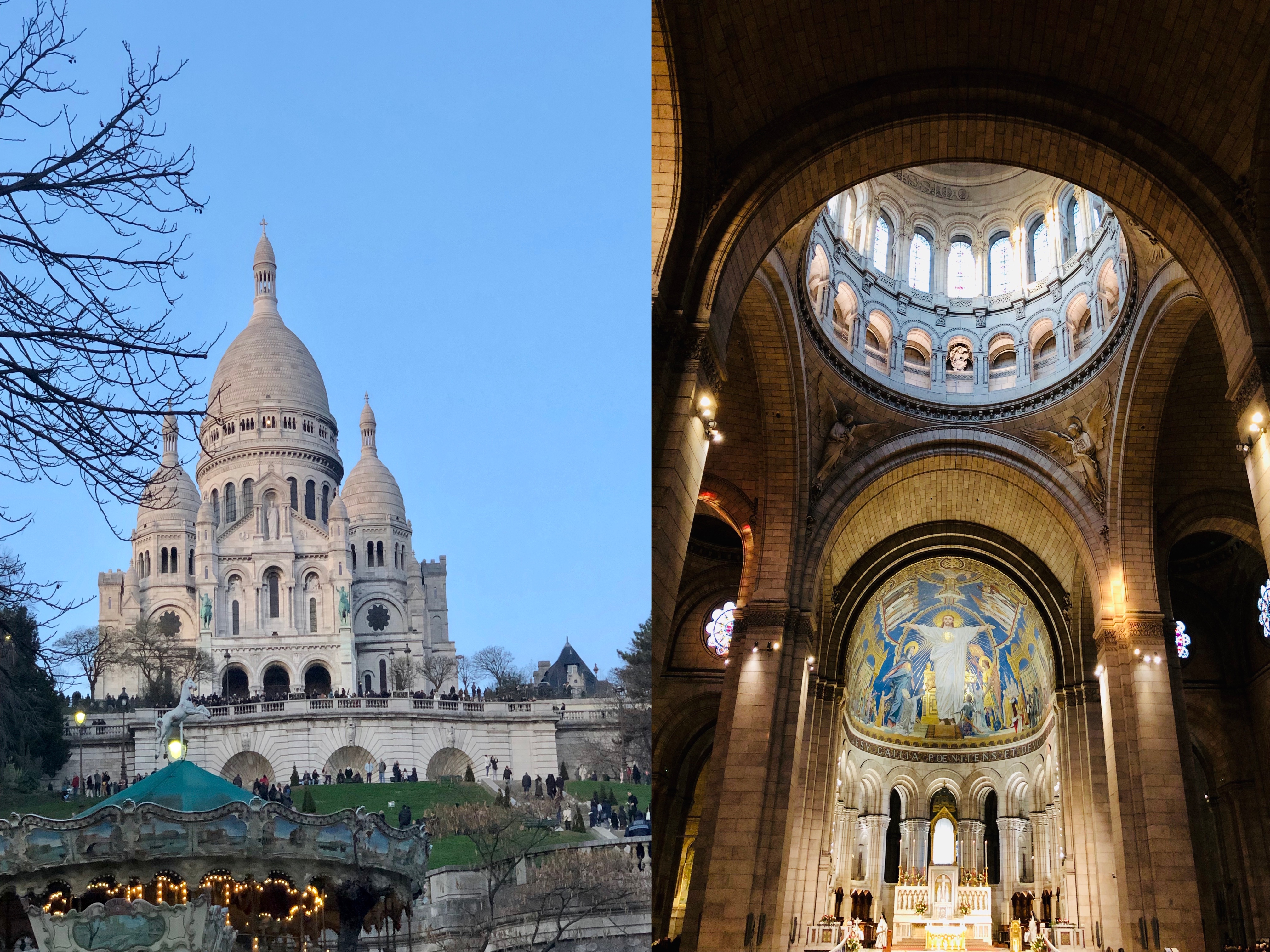
Standing in front of the Sacre-Coeur, you can get an amazing panoramic view of Paris. It is a perfect spot for watching an epic sunset in Paris.
Coming down the hill from Sacre-Coeur, you will get to the Boulevard de Clichy. It is an area of narrow, steep cobblestone streets, filled with cocktail bars and cafes, kebab and crepe stands, restaurants, and souvenir shops.
Some Special Restaurants & Patisseries
Paris has plenty of fine restaurants and pastry stores. Some of them are located along the way to the places you plan to visit. So, put the restaurants into your itinerary and don’t miss the epicurean joys of Paris.
Café de Flore
Café de Flore is located in the sixth arrondissement, close to the Luxembourg Garden. It is a very popular place because many famous writers and philosophers, from Joris-Karl Huysmans and Remy de Gourmont to Georges Bataille and Pablo Picasso, used to dine there. Of course, Café de Flore offers very delicious French food and café fare.
The interior design of Café de Flore, the red upholstered benches and mirrors, hasn’t changed much since World War II. The restaurant is a quintessentially French piece of living history.

Carette
Carette is a pastry lover’s dream. Located very close to the Eiffel Tower, Carette offers traditional French breakfast and a selection of fabulous pastries that you can’t resist at lunch time. The macarons at the Carette are one of the best.
Fouquet’s on Champs-Elysees
Fouquet’s is located in a very convenient spot about midway down the Champ-Elysees. Fouquet’s offers traditional French cuisine. If you plan to walk around the avenue Champs-Elysees, having dinner at Fouquet’s is a great choice. The foie gras and escargot are unforgettable.
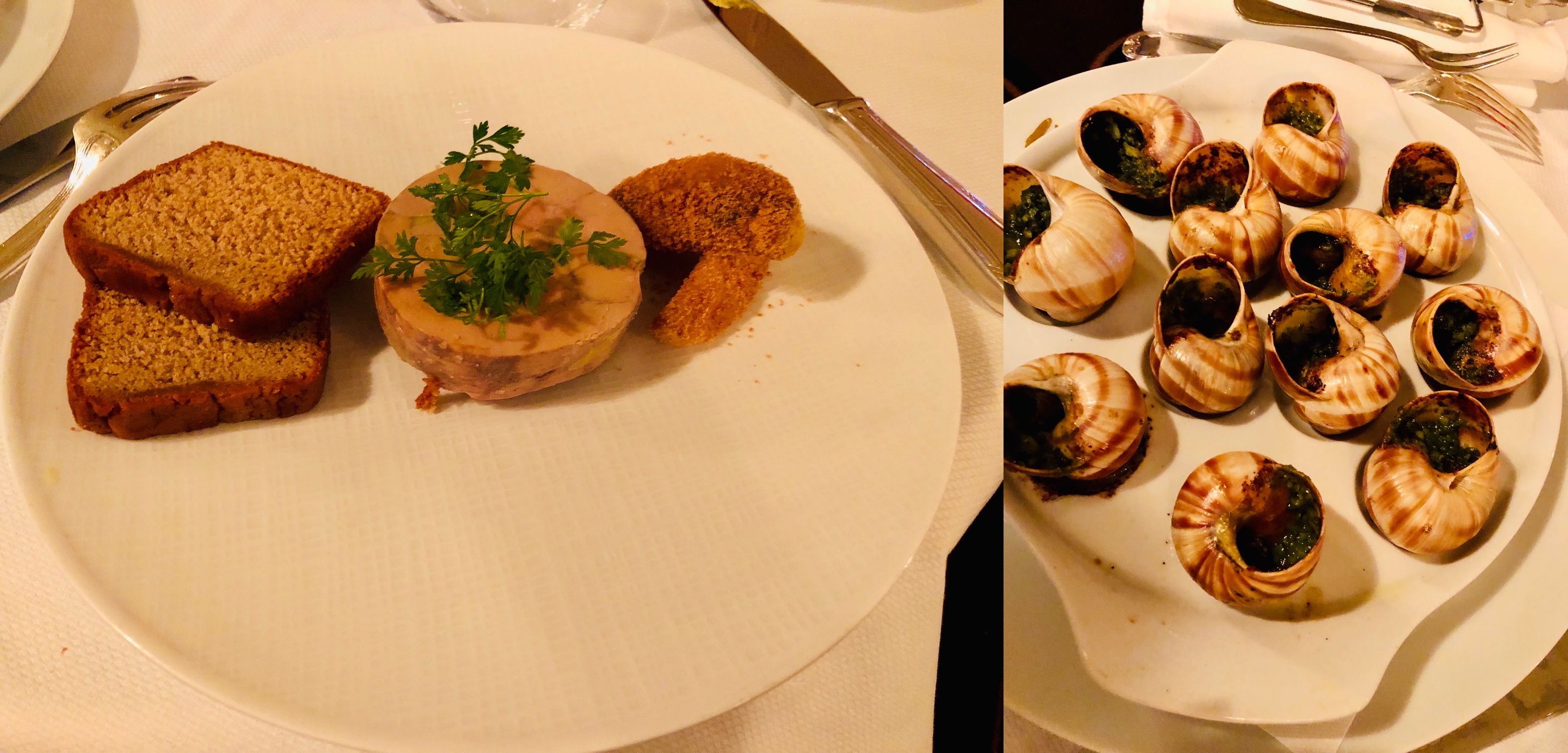
L’Aprege
L’Aprege is a Michelin Three-Star restaurant, located at 84 Rue de Varenne, Paris. We sat in a lower level dining area surrounded by stone walls, with a very unique atmosphere. The food there was delicious and very well presented. The most amazing part was the dessert, Napoleon Cake with an intense flavor and a crisp texture that melted slowly in your mouth.
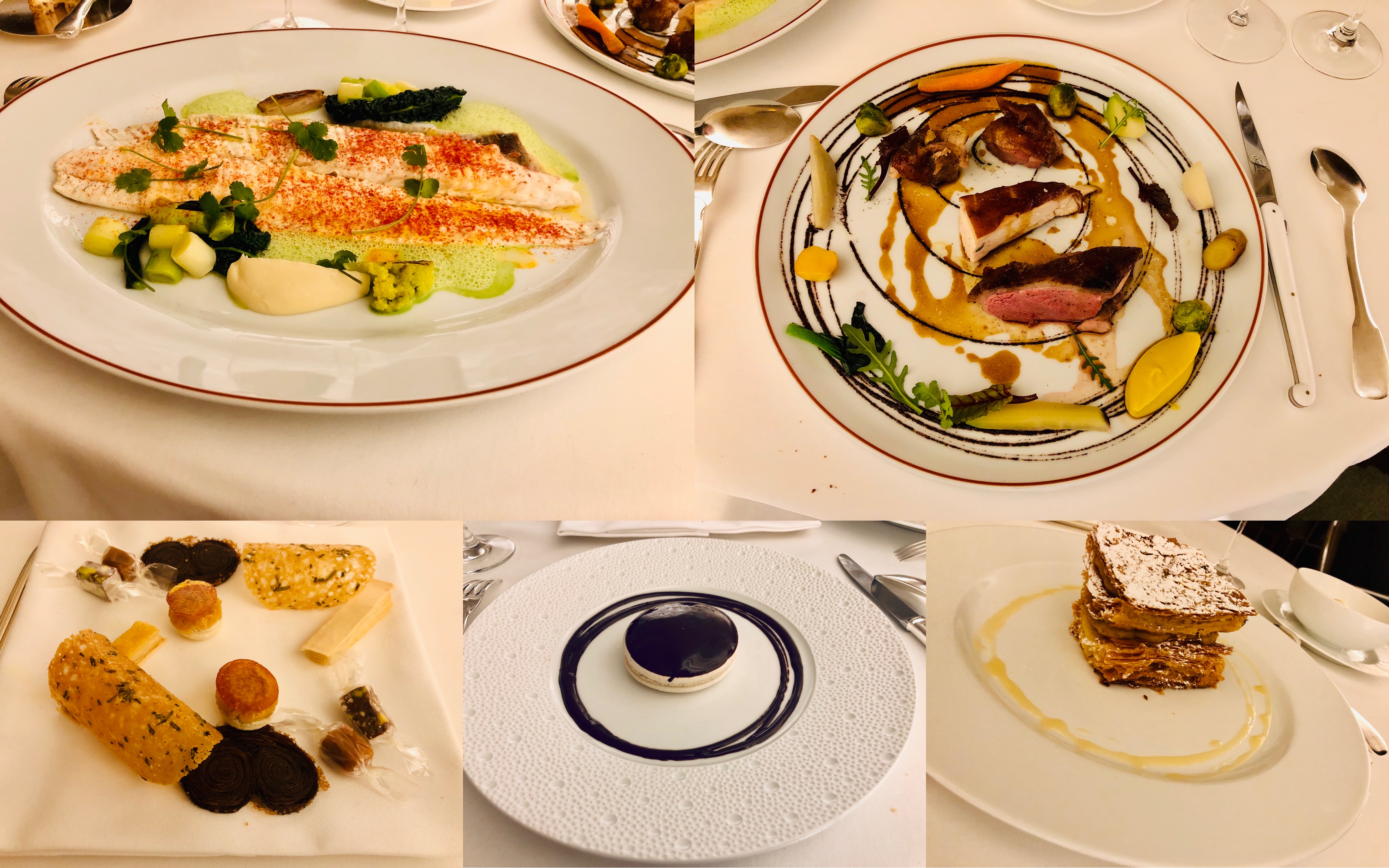
Pastry Lovers’ Heaven
Paris is heaven for pastry lovers. You will find countless types of pastries in this city. The macaron is one of the most popular pastries in Paris. There are plenty of macaron shops that offer both traditional and creative flavorful macarons. French chocolate is another confection you can’t resist. Not only can you enjoy the hot chocolate in the shop, but you can also bring a box of chocolate home as a gift for family and friends. Below are some top-rated pastry stores in Paris.
- Le Macaron Laduree Paris: Macaron shop that offers classic flavors. You can buy a box and take it home.
- Jean-Paul Hevin: High-end chocolate. You can either dine in or purchase some of the chocolates to enjoy later.
- Pierre Herme Paris: World’s Best Pastry Chef in 2016, Pierre Herme makes many famous French pastries, including macarons that you don’t want to miss.
Where to Stay in Paris
The hotels are expensive in Paris. The best way to save money on a hotel is to book it as early as possible or travel at a less crowded time. However, it is not very wise to stay in a hotel that is far away from the tourist areas because not all the neighborhoods are safe for tourists. From the 1st to the 8th arrondissements are popular tourist areas, and those areas have generally safe neighborhoods. From the 9th to the 12th arrondissements are less touristy but are still nice places to stay. Montmartre, in the 18th arrondissement away from the city center, is another choice.
Luxury Hotels with a View of the Eiffel Tower
- Pullman Paris Tour Eiffel: a hotel with Parisian spirit but modern interior design, offers rooms with total or partial views of the Eiffel Tower.
- Les Jardins d’Eiffel: close to Eiffel Tower and the Orsay Museum, with a typical Parisian atmosphere. The Privilege Rooms provide partial or total views of the Eiffel Tower.
- Hotel Plaza Athenee: one the best hotels in Paris. A perfect choice to celebrate some very special occasions. Eiffel Tower can be seen from some windows or balconies.
Moderate-Price Hotels in Safe and Convenient Neighborhoods
- CitizenM Paris Gare de Lyon: close to the Paris main train station, Gare de Lyon, and a metro station, line 1, Paris Gare de Lyon. The rooms have a modern interior design. There is also a bar available at the lobby level.
- Hotel Elysees Ceramic: a beautiful courtyard on this French style property. Hotel Elysees is close to metro station line 1, at Estacio de Charles de Gaulle-Etoile.
Budget-Friendly Hostels with Both Dorm Rooms and Family Rooms
For young people traveling with friends or for large families who want to stay in one room, the hostels in Paris offer a lot of affordable options. You can probably find a hostel that fits your need on Hostelworld.com.
- Hotel Eiffel Rive Gauche: a 5-minute walk from the Eiffel Tower. Some rooms have a view of the Eiffel Tower
- Hotel Louvre Marsollier Opera: at a convenient location, close to the city center and a metro station.
Paris Metro System
The major modes of public transportation in Paris are the metro, referring to in-city subway, and a suburban train called RER that can connect directly with the metro.
You can easily tour Paris by metro. The metro can lead you to all the attractions I mentioned above. It is a very efficient and convenient way to travel in Paris. Paris Metro Map and Routes is a very useful app to find the route to your destination and offers both online and offline versions.
If you travel by air, you can take the RER B train from the main airport, Charles De Gaulle, to Paris. The RER B train connects to multiple metro lines that lead to downtown Paris.
How to Get Cell Phone Connectivity
Make sure your phone can connect to a GSM network. Most modern smartphones can connect to GSM but confirm with your provider.
Check with your cell phone provider and get a data plan that allows you to use data when you travel overseas. They may have limitations about how much data you can use each day, so be clear about the policy before you pay for the data plan.
Get a local sim card in Europe. We landed at Charles de Gaulle Airport, Paris’s main international airport. There was a booth that sells local sim cards which give you plenty of data for up to 14 days in more than one European country for 39 Euros.
Tips on Traveling in Paris
- Pickpockets are everywhere in tourist areas. In Paris, be careful with your belongings all the time. Use cross body bags instead of backpacks and keep your bag in the front.
- The line to enter every tourist site can get very long during the peak season. Purchase tickets online in advance to save yourself a lot of waiting time.
- Make reservations for the popular restaurants you want to dine in.
- Paris is expensive. The best way to save money on your trip is to book your flights and accommodations as early as possible.
- Staying in a safe neighborhood is key to having a wonderful vacation. The simple rule to evaluate the safety in Paris is: the lower number the arrondissement, the safer the area. However, Montmartre is also a safe area since it is a popular tourist area.
- Avoid flights or trains that arrive in Paris late at night, especially if you are traveling solo. The metro might still be running, but it is not very safe for a traveler carrying luggage to walk around.
- The outlet and voltage may differ from your home country, so bring one or two universal charging adapters.
- Consider purchasing a Museum Pass if you are a museum lover. There are multiple options for the Museum Pass depending on how long you plan to visit. Check the details at en.parisinfo.com.
- Foreign credit cards can be used in most of the places, so don’t carry too much cash. Bring one or two, one Visa and one MasterCard or other credit card with no foreign transaction fee.
Seeing the beautiful pictures on the internet is not enough to experience the beauty of Paris. The best way to experience this amazing city is to come to see it by yourself. I hope this post will make your planning easier and make your trip smoother. I will see you in my next post!




